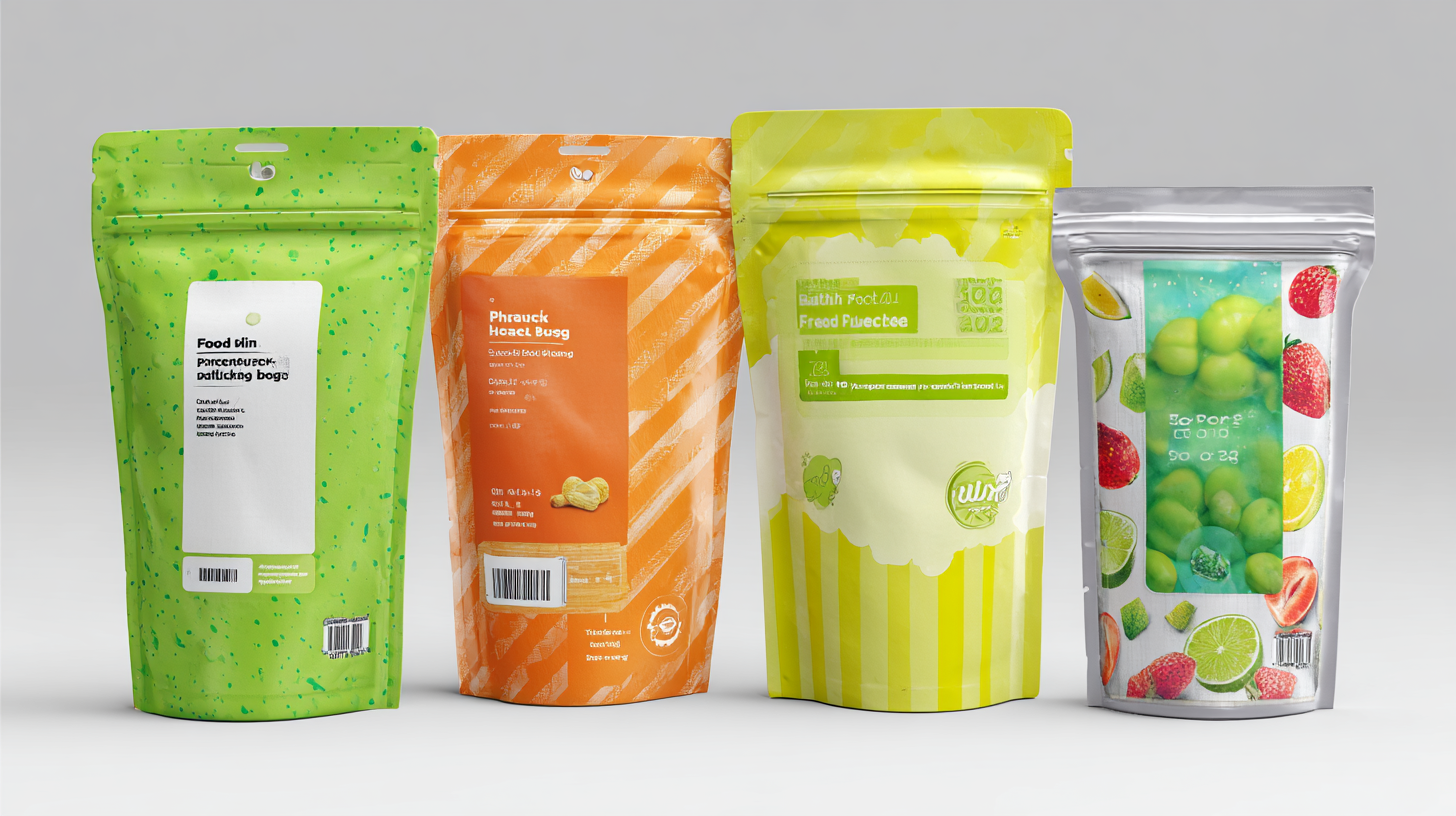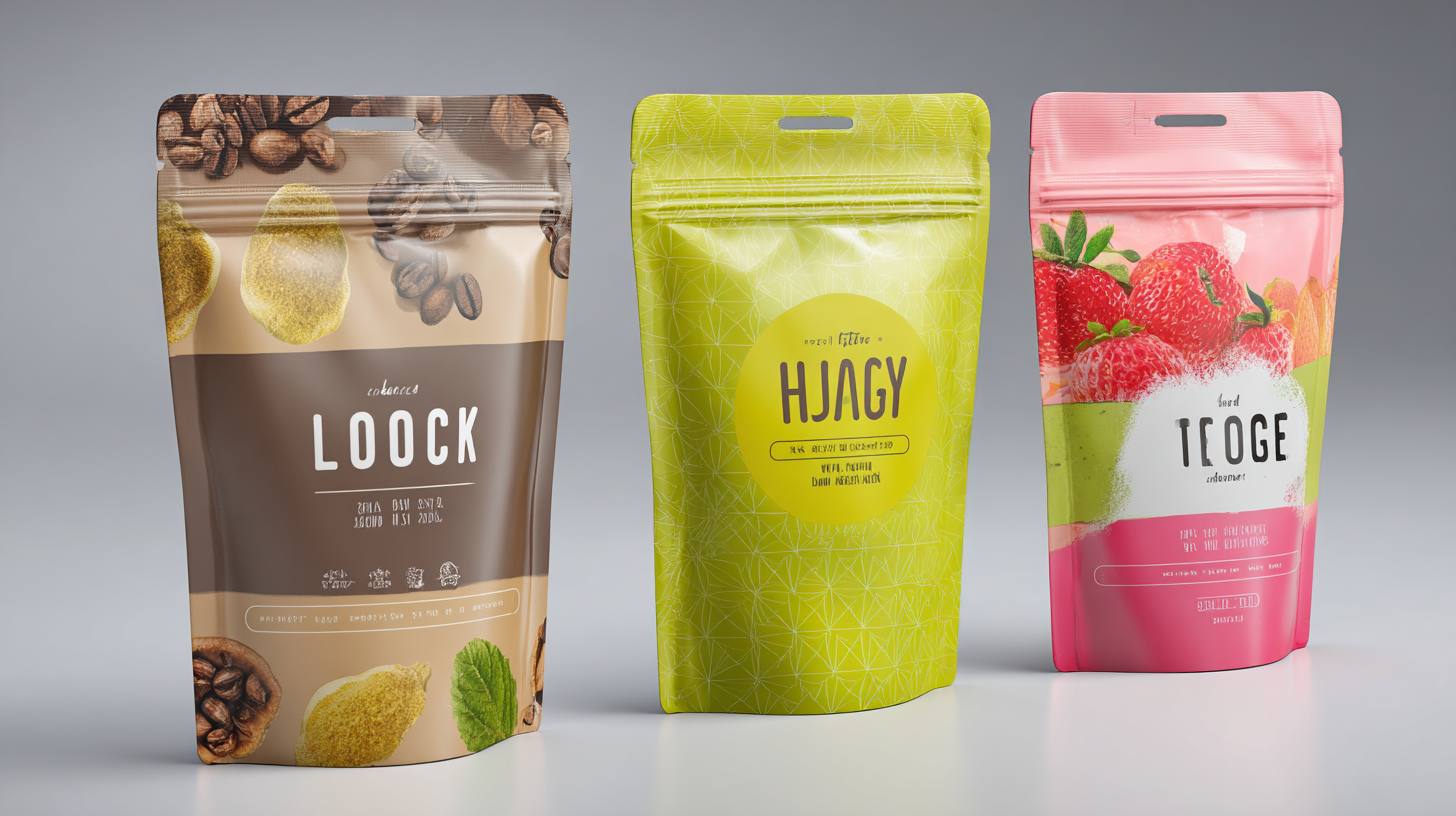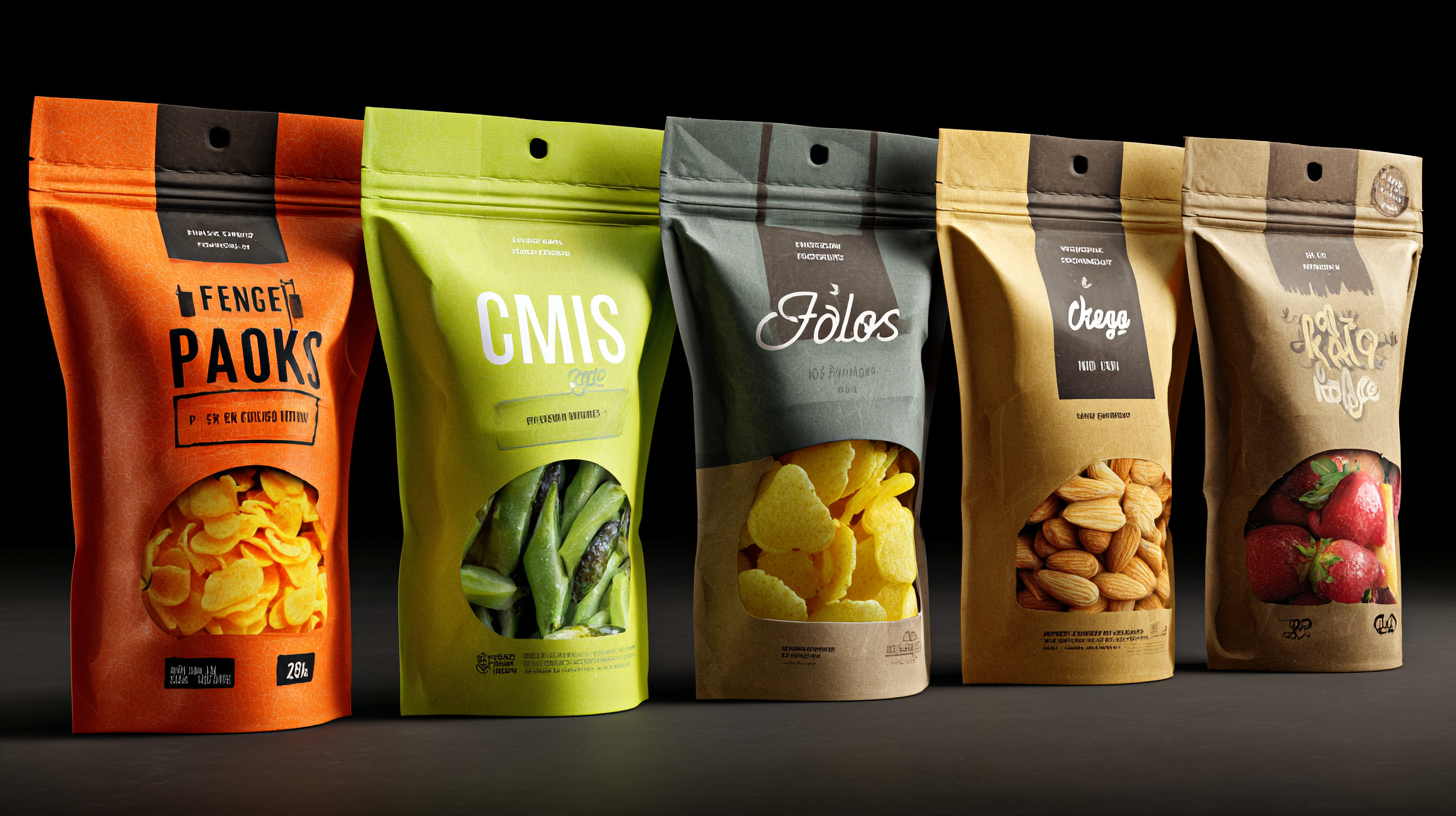Emerging Trends in Food Pouch Packaging for 2025 with a Comparative Analysis of Best Practices
 The landscape of Food Pouch Packaging is evolving rapidly, driven by the demand for convenience, sustainability, and efficiency in the food industry. According to a recent report by Grand View Research, the global food packaging market is expected to reach $500 billion by 2025, with pouches serving as one of the fastest-growing segments due to their lightweight, cost-effective, and space-saving properties.
The landscape of Food Pouch Packaging is evolving rapidly, driven by the demand for convenience, sustainability, and efficiency in the food industry. According to a recent report by Grand View Research, the global food packaging market is expected to reach $500 billion by 2025, with pouches serving as one of the fastest-growing segments due to their lightweight, cost-effective, and space-saving properties.
Emerging trends indicate a shift towards biodegradable materials and multi-layered pouches that extend shelf life while minimizing environmental impact. Additionally, the rise of e-commerce is influencing packaging design, prompting manufacturers to focus on tamper-proof and resealable options. As we explore best practices across various regions including China's robust manufacturing capabilities, understanding these trends will provide invaluable insights for stakeholders aiming to adapt to a dynamic market landscape.
Emerging Innovations in Sustainable Materials for Food Pouches by 2025
As the food packaging industry continues to evolve, sustainability has emerged as a key focus for manufacturers looking to satisfy consumer demand for eco-friendly options. By 2025, it is estimated that the global market for biodegradable food packaging will reach $9.6 billion, growing at a CAGR of 14.4% from 2020 to 2025, according to a report by Research and Markets. This surge in popularity is driven by innovations in materials that not only reduce environmental impact but also offer enhanced functionality and barrier properties.

One of the most promising developments is the use of plant-based polymers derived from renewable resources such as cornstarch and sugarcane. These materials not only decompose more readily than traditional plastics but also maintain the integrity and freshness of packaged food items. Moreover, advancements in coating technologies are enabling these biodegradable materials to achieve comparable moisture and oxygen barrier qualities to their petroleum-based counterparts. The Food and Drug Administration (FDA) has also been closely monitoring these innovations, providing guidelines that encourage the use of safe, sustainable materials in food packaging, further establishing trust among both manufacturers and consumers.
In addition, brands are increasingly adopting circular economy practices, with a focus on recycling and reducing waste associated with food pouch packaging. The Ellen MacArthur Foundation reports that transitioning to a circular economy in packaging could lead to significant cost savings and higher product sustainability ratings. As manufacturers embrace these emerging trends, consumers can expect to see an array of innovative and sustainable food pouch options that align with their values by 2025.
Impact of Consumer Preferences on Food Pouch Packaging Design Trends
As we look ahead to 2025, the landscape of food pouch packaging is poised for significant transformation, largely driven by evolving consumer preferences. Today's consumers are increasingly seeking convenience, sustainability, and visual appeal in their food packaging. This shift is resulting in an uptick in the demand for innovative designs that not only enhance usability but also minimize environmental impact. Brands are responding by integrating resealable features and easy-to-open designs to accommodate busy lifestyles, ensuring that accessibility remains a top priority.
Furthermore, sustainability is becoming a critical factor in packaging design choices. More consumers are prioritizing eco-friendly materials and practices, prompting brands to rethink their packaging strategies. The use of biodegradable films and recyclable pouches is gaining traction, appealing to modern consumers who are conscious of their ecological footprint. Smart branding, coupled with transparent sourcing and production processes, is also becoming crucial in establishing trust and loyalty among customers. As food pouch packaging evolves, staying attuned to these consumer-driven trends will be essential for brands looking to succeed in a competitive market.
Comparative Analysis of Barrier Technologies in Food Pouch Packaging
The food packaging industry is witnessing a shift towards more advanced barrier technologies in food pouch packaging, essential for preserving freshness and extending shelf life. As consumer demand for convenience grows, manufacturers are adopting innovative materials that offer superior protection against environmental factors. Traditional materials such as polyethylene are evolving with the integration of multi-layer structures that enhance moisture and gas barrier properties, ultimately ensuring that the contents remain unspoiled and flavorful.

One emerging trend is the use of bio-based polymers, which not only improve barrier performance but also align with sustainability goals. These materials reduce the environmental footprint while providing comparable, if not superior, protection against oxygen and humidity. Additionally, advancements in nanotechnology are enabling the development of pouches that integrate nanoparticles, which further enhance barrier capabilities without adding significant weight or thickness. As we look toward 2025, the food industry will likely continue to explore these high-performance packaging solutions, ensuring products remain safe and enjoyable for consumers while meeting regulatory standards.
Market Growth Projections for Food Pouch Packaging: Key Insights and Data
The food pouch packaging industry is poised for significant growth, with projections indicating a compound annual growth rate (CAGR) of approximately 5.2% in the Nordic market from 2025 to 2034. This upward trend reflects a broader shift in consumer preferences toward convenient, lightweight, and sustainable packaging options. As we approach 2025, it's essential for brands to adopt best practices that resonate with eco-conscious consumers, especially in the flexibility and functionality of packaging materials.
Tips for embracing these emerging trends include prioritizing innovation in material usage, such as biodegradable and recyclable options that reduce environmental impact. Brands should also focus on optimizing the design of pouches, ensuring they are not only visually appealing but also user-friendly, which can enhance the consumer experience and drive sales. Moreover, leveraging data analytics to understand market demands and consumer behavior can provide valuable insights, guiding strategic decisions in product offerings and marketing.
As various sectors, including frozen food and baby food packaging, continue to evolve, staying informed about market dynamics and investing in research and development will be crucial. Companies that actively engage in sustainability measures and embrace technological advancements in packaging will likely lead the way in this competitive landscape.
Case Studies of Leading Brands Implementing Best Practices in Food Pouch Packaging
In recent years, leading brands have begun to redefine food pouch packaging by implementing innovative practices that not only enhance product appeal but also address sustainability concerns. For instance, brand A has adopted biodegradable materials for its food pouches, significantly reducing plastic waste. By investing in eco-friendly alternatives, they have successfully attracted environmentally conscious consumers while reinforcing their commitment to sustainability.
In another example, brand B has focused on convenience and usability by designing resealable pouches that maintain product freshness. This packaging approach caters to the modern consumer's on-the-go lifestyle, allowing for easy storage and access. Furthermore, brand B's use of eye-catching graphics and clear labeling has improved customer engagement, showcasing the importance of both aesthetics and functionality in food pouch design.
These case studies highlight the significance of adopting best practices in food pouch packaging. As brands move towards more sustainable and user-friendly options, they not only cater to consumer preferences but also set industry standards that drive innovation in food packaging. As we approach 2025, these emerging trends will likely shape the future landscape of the food packaging industry, inspiring others to follow suit.
Emerging Trends in Food Pouch Packaging for 2025
| Trend | Best Practice | Sustainability Impact | Consumer Preference | Market Growth Rate |
|---|---|---|---|---|
| Biodegradable Materials | Utilization of plant-based plastics | Reduces landfill waste | High demand for eco-friendly options | 12% annual growth |
| Smart Packaging | Integration of QR codes and sensors | Enhances traceability and reduces waste | Increased interest in technology | 15% annual growth |
| Resealable Packaging | Innovative zippers and seals | Minimizes food waste | Highly preferred by busy consumers | 10% annual growth |
| Minimalist Design | Focus on clean, simple aesthetics | Encourages recycling | Preferred by millennials | 8% annual growth |
| Multi-portion Packaging | Packaging designed for sharing | Reduces excess packaging use | Increasing popularity for group consumption | 9% annual growth |
